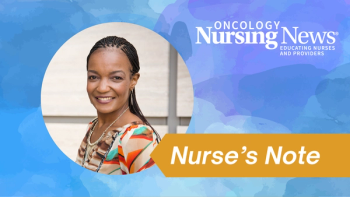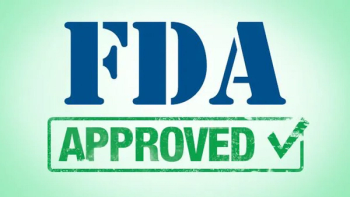
- September 2015
- Volume 9
- Issue 7
Managing Cancer Treatment's Late Effects and Identifying Those Most at Risk
A cancer diagnosis once understandably brought a singular focus on fighting the disease, with less attention paid to quality of life once the patient's active treatment was over.
Jennifer R. Klemp, PhD, MPH
A cancer diagnosis once understandably brought a singular focus on fighting the disease, with less attention paid to quality of life once the patient’s active treatment was over. Yet swelling numbers of cancer survivors—nearly 15 million in the United States currently with more than 18 million expected by 2020—is shining a much-needed spotlight on the importance of proactively assessing individual risks for late effects of cancer treatment, alongside careful survivor monitoring and support.
In addition to the well-established risk for secondary malignancies and cardiovascular issues, survivors can experience a wide spectrum of both physical and psychological effects from traditional cancer treatments like chemotherapy and radiation, and recent changes in treatment modalities add yet another layer of complexity to the mix.
“We know certain agents have a higher risk of cardiotoxicity, whether it’s Herceptin or an anthracycline—these are more established therapies that can increase that risk. We don’t really know as much about what the targeted therapies are doing, and also, what about these different drugs in combinations? I think that’s the piece that’s really changing,” explained Jennifer R. Klemp, PhD, MPH, in a recent interview with Oncology Nursing News.
Klemp, an associate professor at the University of Kansas Medical Center (KUMC) and director of its Cancer Survivorship Center, also serves as chief executive officer for Cancer Survivorship Training for Healthcare Professionals (Sidebar) a series of online and mobile courses for practitioners, including one focused on the “Physical, Late, and Long-Term Effects of Cancer and Its Treatment.” Coming this fall is another unit focused on cardio-oncology she developed in collaboration with Daniel J. Lenihen, MD, professor of Medicine at Vanderbilt University Medical Center.
The Value of Vigilance
Making sure that survivors get the appropriate screenings to avert problems like cardiotoxicity and bone loss is vital to their long-term quality and quanitity of health.
“I tell all of my breast cancer survivors that you have an equal or greater risk of dying of cardiovascular disease than your breast cancer; we’re so worried about your breast cancer ... we really need to be paying equal attention to cardiovascular disease,” said Klemp. However, the situation is mixed with regard to survivors adhering to their recommended follow-up screenings:
“Breast cancer survivors are very good about getting their mammograms or other types of imaging, but breast cancer survivors are not good at getting their colonoscopies,” Klemp noted.
“If our job as a comprehensive cancer center is to treat and prevent further cancers, then we need to make sure that they’re getting their cancer screenings.”
Klemp presented research from a study of 427 women treated at the breast cancer survivor clinic she directs at KUMC over the 6-year period since the clinic’s inception in 2007 at last year’s annual meeting of the American Society of Clinical Oncology (ASCO. Among the findings she reported was how the clinic’s proactive approach and fast-track referral system dramatically improved screening uptake1:
• 77% referred for colonoscopy completed colon cancer screening
• 92% referred attended cardio-oncology screening visit
• 100% referred completed a bone miner- al density analysis
• Lymphedema education and management increased significantly
The researchers concluded that, “multidisciplinary care facilitated through a continuity of care survivorship clinic improves compliance with recommended follow-up and cancer screening,” but acknowledged that additional research on the cost and impact of delivering survivorship care is needed.1
Identifying Those Most at Risk
In this burgeoning era of precision medicine, the time seems especially ripe for improving risk assessment for cancer survivors, especially given the fact that the majority of survivors won’t be symptomatic for effects which may occur years later.
Whereas cancer diagnosis and treatment planning has become increasingly personalized, Klemp noted, “there are currently few models for stratifying risk of physical and psychosocial effects of cancer and its treatment ... This is a crucial gap to fill to more effectively manage survivors and their caregivers and to lower overall healthcare costs.”2
“You can look at these long lists of late and long-term effects, and they include everything that could ever happen to you—I don’t think that’s useful,” Klemp stressed.
“Instead of giving a patient a recipe for all of the things that could happen, couldn’t we ask 3-4 more questions, so that we can better risk-stratify them to help determine who is at highest risk,” she continued, thus better targeting survivors who need careful monitoring for cardiopulmonary effects or support to promote bone health, for example.
Klemp sits on the National Cancer Institute’s Community Oncology Cardiotoxicity Task Force, which is currently collaborating with the National Heart, Lung, and Blood Institute and professional societies like ASCO in the development a pre-assessment tool clinicians can use to help understand an individual patient’s risk for cardiac effects even before their cancer therapy begins, looking at such issues as family history, medication usage, elevated lipid levels, and shortness of breath.
That means for nurses, “really being mindful of the symptoms your patients tell you, but also paying attention to shortness of breath, past history, any type of fluid retention, anything that would indicate any signs of heart failure.” She is currently conducting research to validate a gender-specific symptom assessment checklist that would assist clinicians with that all-important risk stratification.
“If you can take that additional step, that’s not only extremely beneficial to the patient, but it’s going to streamline their care. We’re dealing with what’s most important.”
Cancer Survivorship Training for Healthcare Professionals
Many larger cancer centers have dedicated survivor clinics, but providing such services in the community setting can be more challenging, notes Jennifer R. Klemp, PhD, MPH.
To address the growing need for specialized survivor services, Cancer Survivorship Training (CST) provides online continuing education courses and an online community for healthcare professionals to facilitate communication and collaboration among all healthcare professionals to deliver patient-centered survivorship care that is co- ordinated and evidence-based. The program’s target audience includes oncology nurses, physicians, mid-level practitioners, allied health professionals, and practice administrators.
Each course is developed in collaboration with medical content matter experts and provides the information needed to address the primary issues associated with cancer survivorship.
In addition to courses focused on late and long-term physical effects of cancer treatment and the upcoming new unit on cardio-oncology, CST has units on such topics as: Psychosocial Issues and Cancer; Energy Balance (Diet and Exercise); Fertility Preservation, and Screening for New or Recurrent Cancer.
For more information on these courses and the entire CST portfolio, visit
REFERENCES
1. Klemp JR, Ranallo L, Knight CJ, et al. Breast cancer survivorship care: A continuity of care model of delivery. J Clin Oncol. 2014;32(suppl 26; abstr 116).
2. Klemp JR. Survivorship care planning: one size does not fit all. Semin Oncol Nurs. 2015;31(1):67-72
Articles in this issue
about 10 years ago
Preparing Nurses for Cancer Survivor Care-a Growing Needover 10 years ago
Cancer Pain-Is Relief in Sight for All Cancer Patients?over 10 years ago
Finding Our Way by Helping Patients Along Their Wayover 10 years ago
Keeping Watch: Monitoring Survivors for Late Treatment Effectsover 10 years ago
The VIPs in Our Patients' LivesNewsletter
Knowledge is power. Don’t miss the most recent breakthroughs in cancer care.




















































































